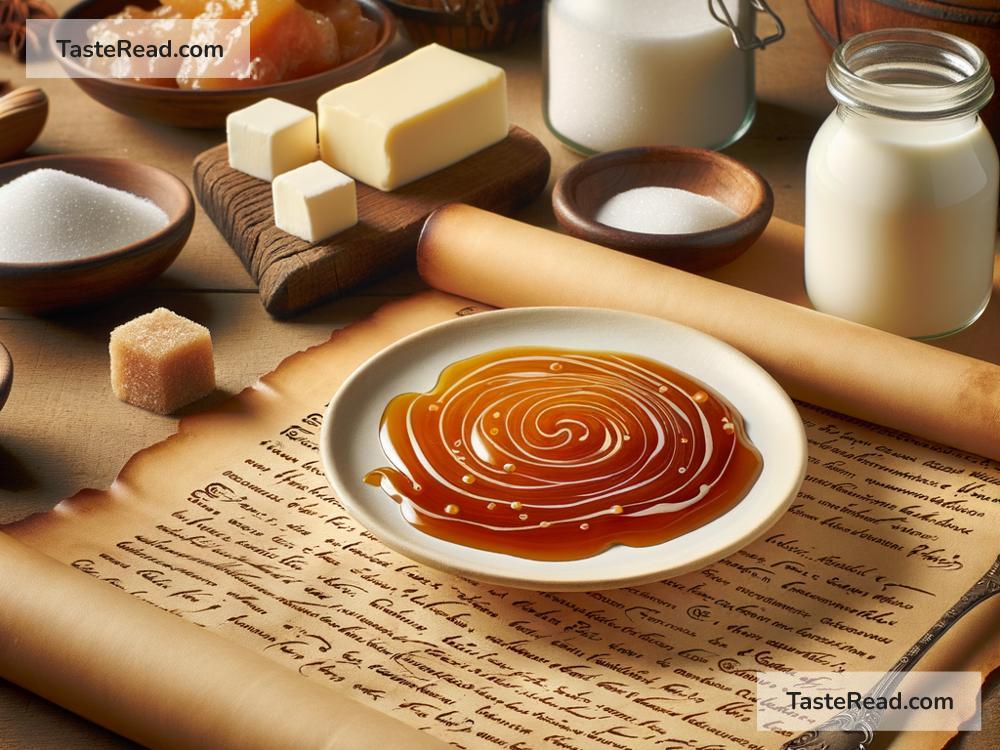Origins of the First Caramel in Ancient Tales: A Journey Through Sweet History
Caramel is one of the most loved treats today. Its golden-brown color, rich flavor, and smooth texture make it a favorite ingredient in desserts, candies, and sauces. But have you ever wondered where caramel originally came from? While the sweet we know today has evolved over time, its story stretches back centuries to ancient civilizations, where early versions of caramel first made their appearance. Surprisingly, caramel’s origins may be linked to human ingenuity, simple ingredients, and a love for sweetness.
What Is Caramel?
Before diving into its history, let’s first understand what caramel is. Caramel is made by heating sugar until it melts and turns brown. Through this process, sugar undergoes a chemical transformation called caramelization, where it forms new compounds that give caramel its unique taste and color. Today, caramel often includes added butter, cream, or vanilla to enhance its flavor, but its beginnings were far simpler.
Early Sweeteners in Ancient Times
Thousands of years ago, humans didn’t have access to refined sugar like we do now. Instead, ancient civilizations relied on natural sweeteners, such as honey, fruit syrups, and date extracts. These ingredients were prized because sweetness was considered luxurious and rare. Some of the earliest known examples of sweet treats can be traced back to Ancient Egypt, Mesopotamia, and India.
In Mesopotamia, around 2000 BCE, people used date syrup to create sweet dishes. Similarly, in Ancient Egypt, honey played a central role in both cooking and religious rituals, often being combined with nuts and fruits. These early practices laid the foundation for experimenting with sweetness, eventually leading to discoveries like caramel.
The Persians and the Early Form of Caramel
One of the first recorded instances of caramel-like substances comes from Persia (modern-day Iran). Around 600 CE, Persian cooks were known to heat sugar and water together to create a thick, golden syrup. This syrup was often used to coat fruits and nuts or added to desserts. The process of boiling sugar until it changed forms marked a significant step in the creation of caramel.
While early caramel was likely simpler than what we enjoy today, the idea of transforming sugar through heat reflects the kind of creativity that has fueled culinary innovation over centuries. Persian trade routes helped spread this technique to neighboring regions like the Arab world and Europe.
The Arab World and Caramel’s Evolution
During the Middle Ages, Arab scholars and cooks made significant advancements in sugar refining and cooking techniques. They were experts at turning sugar into syrups and molds and experimenting with heat to create new forms and textures. Arab influence on food was immense during this period, as they held vast knowledge in both science and culinary arts.
By the 9th century, sugar had become more accessible in the Arab world due to trade, and caramel-like creations began appearing in various recipes. These early versions of caramel were used to decorate desserts or add sweetness to dishes. Some stories even suggest that Arab traders introduced sugar-cooking techniques to European lands—an important milestone in caramel’s journey.
Caramel in Europe: Sweetness Takes Center Stage
As sugar became more common in Europe during the Renaissance period, thanks to advancements in sugar trade and production, people started experimenting with ways to use sugar creatively. By the 17th century, skilled European confectioners began making candies, syrups, and sauces from sugar. They discovered that by slowly heating sugar, they could create caramel, the smooth and sticky substance that we now use in countless desserts.
In France, caramel gained particular popularity. French confectioners perfected the art of making caramel by combining melted sugar with butter and cream. This rich version of caramel, known as “caramel au beurre salé” (salted butter caramel), became a beloved treat and elevated caramel’s status in European culinary traditions.
A Global Love Affair with Caramel
Over time, caramel spread across the globe and took on new forms. Today, it’s used in everything from candies like caramel chews and toffees to toppings for ice cream and popcorn. Caramel has also become a cornerstone ingredient for baking, often used to flavor cakes, cookies, and puddings.
Modern caramel still follows the basic principle of heating sugar, but it has evolved into a versatile ingredient combined with milk, butter, salt, and other flavors—depending on cultural tastes and innovations.
The Sweet Legacy Continues
It’s fascinating to think that caramel’s origins can be traced back to ancient civilizations like Persia and the Arab world, whose ingenuity laid the groundwork for transforming humble sugar into the delightful treat we love today. From early experiments with boiling sugar to the intricate recipes perfected by confectioners in Europe, caramel’s journey reflects centuries of creativity, trade, and culinary curiosity.
Next time you enjoy a piece of caramel or drizzle some caramel sauce over your dessert, take a moment to appreciate its rich history. What started as a simple idea in ancient kitchens has become an enduring symbol of sweetness, connecting cultures and generations through the love of food.
Who knows? Maybe caramel will continue to evolve in the future, bringing new surprises to our taste buds. For now, let’s savor its golden goodness and celebrate the ancient tales that gave birth to this timeless treat.


